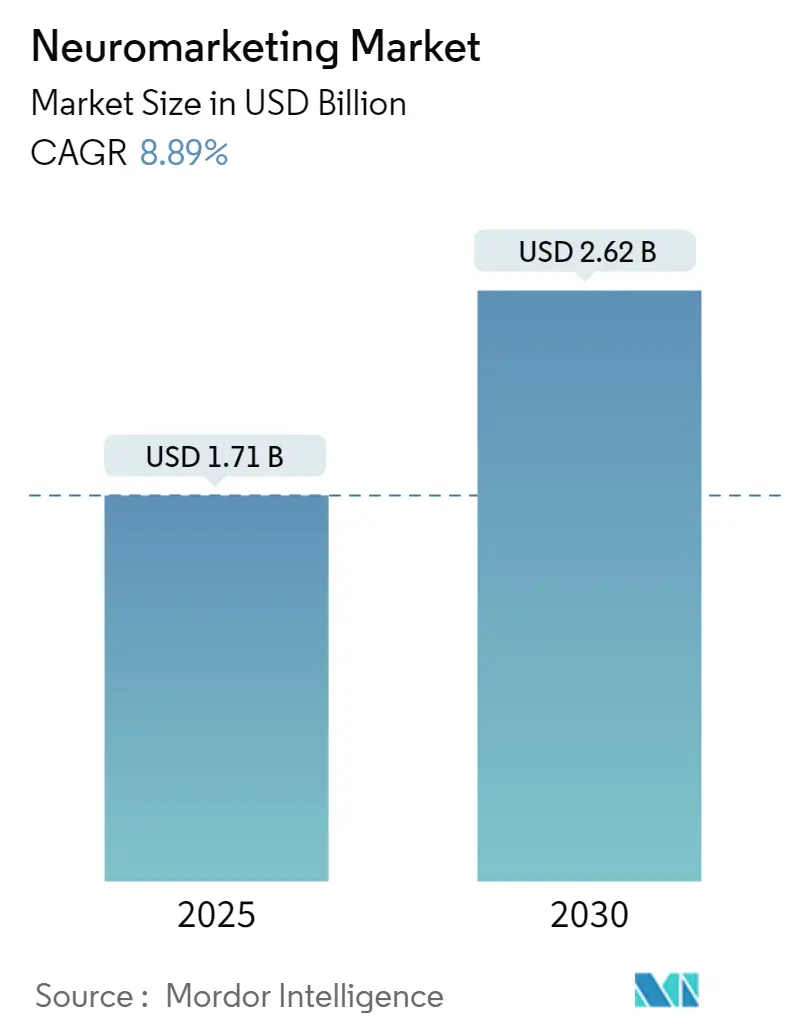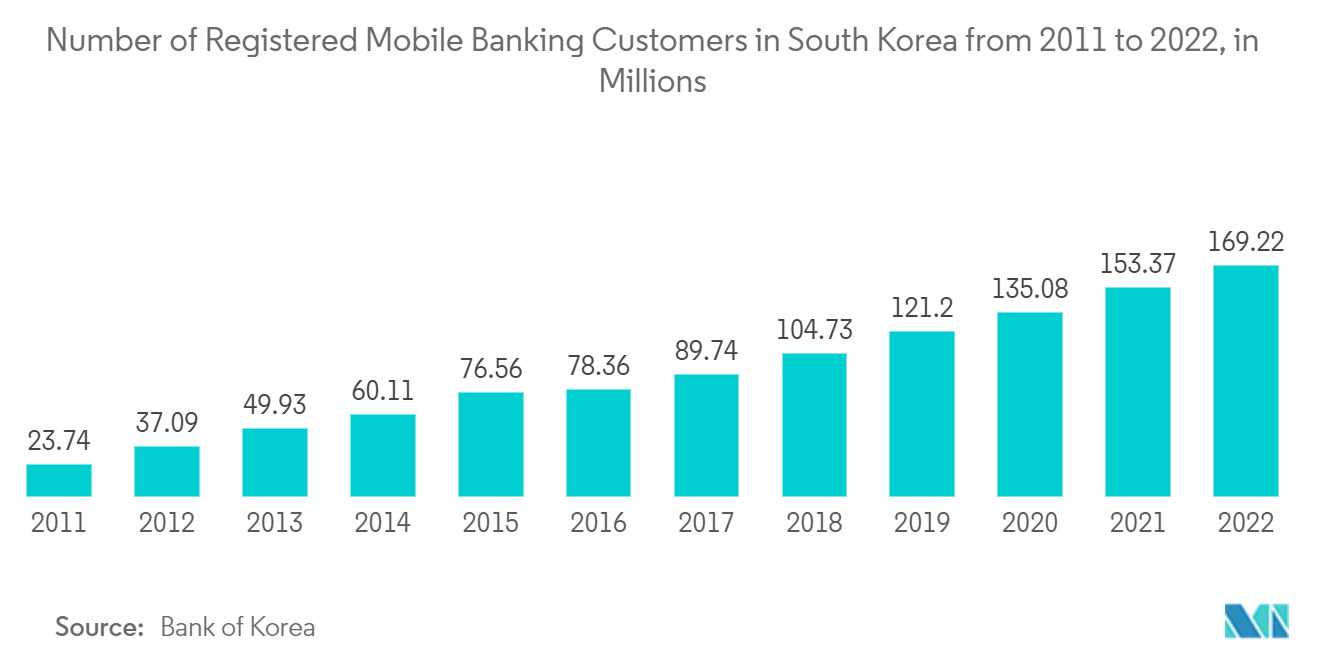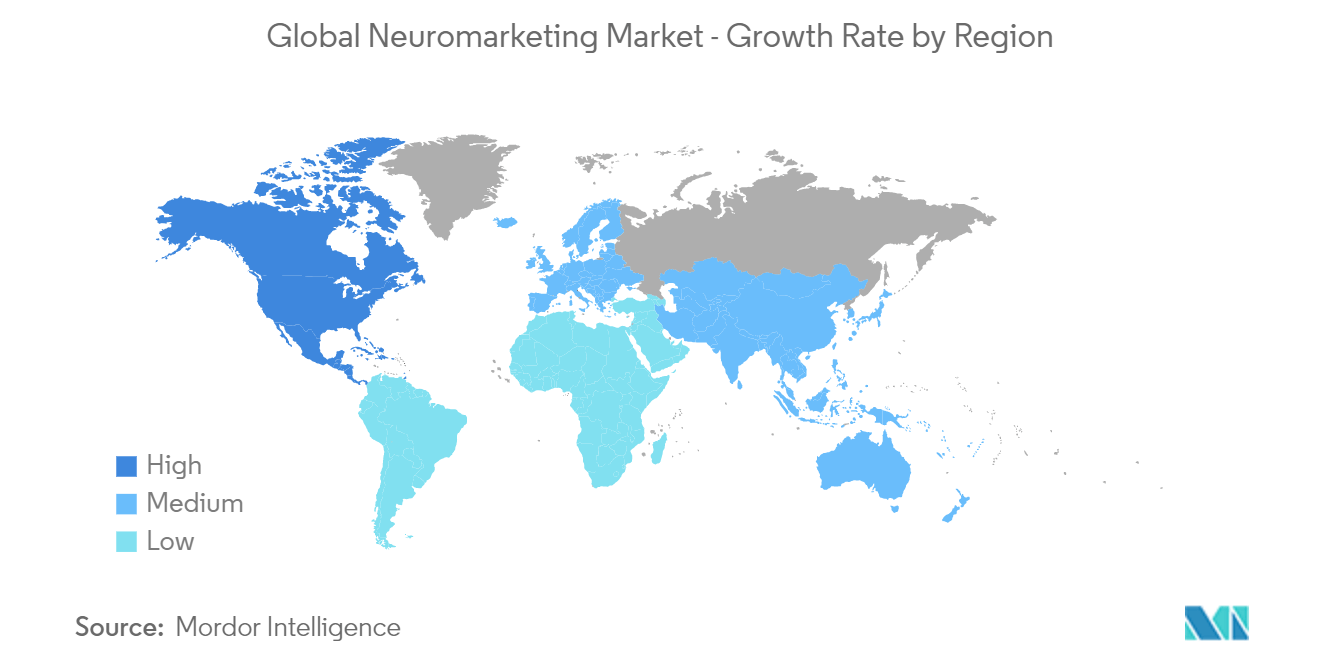Neuromarketing Market Analysis
The Neuromarketing Market size is estimated at USD 1.71 billion in 2025, and is expected to reach USD 2.62 billion by 2030, at a CAGR of 8.89% during the forecast period (2025-2030).
Neuroscience is beneficial in interpreting and studying consumer perceptions and has played a major role in enhancing the behavioral predictions of consumers. Neuroscience allows research firms and marketing companies to concentrate and customize their services according to customer expectations.
- Neuromarketing solutions are assisting the process of consumer data in a marketing environment in an extremely effective manner due to the usage of neuroscience techniques. The increasing awareness about the potential benefits offered by these techniques is further driving the adoption of various neuromarketing solutions at a rapid pace. Major companies like PepsiCo, The Weather Channel, eBay, and Diamler have implemented neuromarketing research techniques to conduct market research, run focus groups, and design marketing campaigns.
- Various vendors are developing new technological approaches (software, applications, and user interfaces) to enable companies to understand their customers and deliver a tailor-made marketing approach. Brands like Campbell's and Frito-Lay have adopted neuroimaging to reimagine their packaging strategy. Studies have revealed that customers react differently to packaging, with color, text, and imagery influencing their purchase decisions.
- Major companies have implemented neuromarketing research techniques to measure consumer behavior for their respective products to identify the consumer's purchase decision with the help of various technologies, such as functional magnetic resonance imaging (fMRI), electroencephalography (EEG), and eye tracking.
- Privacy and data security can emerge as major concerns in many neuromarketing techniques, as all the data derived after scanning the brain can get leaked and lead to vulnerable situations. This acts as a restraint on the market growth.
- The impact of COVID-19 on the neuromarketing market was significant in the short run, as for an accurate analysis, a large sample of data is required. However, with people confined to their homes because of the global lockdown, data generated from the physical world, like brick-and-mortar showrooms, were drastically reduced. Also, the manufacturing of neuromarketing systems was slightly affected because the global supply chain was disrupted, and manufacturing facilities were shut down due to regulations imposed by various international governments.
Neuromarketing Market Trends
BFSI End-User Vertical to Grow at a Significant Rate
- In the context of services, it is possible to judge that banking services are more risky than travel or other forms of leisure, more demanding for consumers to influence, and more difficult to grasp due to their technicality.
- Since most people utilize banking services, the providers' websites one of the communication channels must be user-friendly, clear in terms of the information being conveyed, and simple to navigate.
- Numerous banks have developed online and mobile applications that are not tailored to the users. In addition to the typical flaws of shoddy integration with the bank's other services, glitchy apps, or apps that crash without warning, even a well-functioning app may fail to consider the needs of its consumers.
- By analyzing online user journeys and comprehending the emotional experience a person gets when visiting a website or app, neuro marketers seek to minimize this as much as feasible. By cultivating sentiments of loyalty, banking providers can employ behavioral science to boost products per home, expand wallet share, and lower attrition rates.
- For instance, eye tracking is a neuromarketing research technique that can show how consumers comprehend the information they view on a website, identify usability issues, and show where there is room for improvement in the design of a bank's website.
North America is Expected to Hold Largest Market Share
- Due to the rising number of US-based market vendors and large investments in digital marketing made by North American end-user industries, One of the most significant regions in the global economy is North America global neuromarketing industry. Additionally, the US is a market pioneer in the area under study and is important in advancing technology on a global scale.
- Additionally, the area is home to numerous well-known market research firms that are important to the growth of the market, including Nielson, IQVIA, Kantar, Information Resources Inc., and Ipsos.
- Due to heavy investment in marketing techniques and brand competitiveness, consumer behaviour studies have experienced tremendous growth in the region over the past few decades. Therefore, more research firms are attempting to include physiological and neurological data into standard market research studies.
- A source of lab-based audience research, MediaScience is situated in the US and uses a variety of neuro-measures, such as biometrics, facial expression analysis, eye-tracking, response-latency testing, and EEG. In recent years, the business also worked with Hulu to research the effectiveness of commercials made for social media platforms that were later repurposed for the TV streaming service.
- Market vendors in the area are increasingly using neuromarketing strategies, which has led to a number of ground-breaking studies that are beneficial to local marketers. People unconsciously respond to close-ups of hands, for example, according to consumer neuroscience study by the US-based Mindshare, but there is a limit to how close the camera can approach.
Neuromarketing Industry Overview
The Neuromarketing Market is moderately competitive and consists of several players. Due to the growing demand for neuromarketing applications and technical improvement in emerging economies, a small number of players hold the majority of the market share. Many businesses are expanding their reach into new markets and enhancing their market presence.
In April 2023, the Nielsen Company LLC (Nielsen Consumer Neuroscience) and digitalAudience announced data measurement collaboration for open web measurement in Northwestern Europe, where Nielsen will integrate demographic data provided by the digital audience into the Nielsen Identity System to provide more scope and accuracy in Nielsen's digital ad measurement for the open web, connecting digital impressions to demographics across millions of devices.
In September 2022, Tobii partnered with HeadVantage to bring eye tracking to sports fans and athletes. Through this collaboration, sports fans can better comprehend athletes' thought processes and assist them in their training and improvement across a variety of disciplines. A significant improvement in fan experience will also occur.
Neuromarketing Market Leaders
-
Immersion Neuroscience
-
Buyology Inc.
-
Merchant Mechanics Inc.
-
Emotion Research LAB
-
The Nielsen Company LLC (Nielsen Consumer Neuroscience)
- *Disclaimer: Major Players sorted in no particular order
Neuromarketing Market News
- Apr 2023: Cadwell Industries Inc. announced the US launch of Voyager for remote wireless access to in-home EEG monitoring with video. Now that Arc Apollo+ has EEG data collection with automatic data backfill, doctors and technologists can remotely access real-time EEG data and video from patients operating in-home. This feature is designed to enable thorough real-time analysis with a complete data set for daily reporting.
- Jul 2022: Tobii was selected by Sony Interactive Entertainment to be the eye-tracking technology provider for PlayStation VR2. The partnership with Sony Interactive Entertainment (SIE) is further evidence of Tobii's ability to provide cutting-edge solutions at a mass market scale using its world-leading technology. PlayStation VR2 sets a new standard for immersive virtual reality (VR) entertainment and will allow millions of users to experience the power of eye tracking globally.
Neuromarketing Industry Segmentation
Neuromarketing is the field of marketing that uses medical technologies such as Functional Magnetic Resonance Imaging (fMRI) to study the brain's responses to marketing stimuli. It is a formal study of the brain's responses to advertising and branding and the adjustment of those messages based on feedback to elicit even better answers. Researchers use different technologies to measure specific types of brain activity in response to advertising messages. With this information, companies learn about the consumers' decision-making skills and the driving force toward their persona.
The Neuromarketing Market is Segmented by End-user Industry (BFSI, Retail/Consumer Brands, Market Research, and Scientific Institutions) and Geography (North America, Europe, Asia-Pacific, and the Rest of the World). The market sizes and forecasts are provided in terms of value (USD) for all the above segments.
| By End-Users | Banking, Financial Services, and Insurance (BFSI) | ||
| Retail/Consumer Brands | |||
| Market Research | |||
| Scientific Institutions | |||
| Other End-Users | |||
| By Geography | North America | United States | |
| Canada | |||
| Europe | Germany | ||
| France | |||
| United Kingdom | |||
| Rest of Europe | |||
| Asia Pacific | India | ||
| China | |||
| Japan | |||
| Rest of Asia Pacific | |||
| Rest of the World | |||
Neuromarketing Market Research FAQs
How big is the Neuromarketing Market?
The Neuromarketing Market size is expected to reach USD 1.71 billion in 2025 and grow at a CAGR of 8.89% to reach USD 2.62 billion by 2030.
What is the current Neuromarketing Market size?
In 2025, the Neuromarketing Market size is expected to reach USD 1.71 billion.
Who are the key players in Neuromarketing Market?
Immersion Neuroscience, Buyology Inc., Merchant Mechanics Inc., Emotion Research LAB and The Nielsen Company LLC (Nielsen Consumer Neuroscience) are the major companies operating in the Neuromarketing Market.
Which is the fastest growing region in Neuromarketing Market?
Asia Pacific is estimated to grow at the highest CAGR over the forecast period (2025-2030).
Which region has the biggest share in Neuromarketing Market?
In 2025, the North America accounts for the largest market share in Neuromarketing Market.
What years does this Neuromarketing Market cover, and what was the market size in 2024?
In 2024, the Neuromarketing Market size was estimated at USD 1.56 billion. The report covers the Neuromarketing Market historical market size for years: 2019, 2020, 2021, 2022, 2023 and 2024. The report also forecasts the Neuromarketing Market size for years: 2025, 2026, 2027, 2028, 2029 and 2030.
Our Best Selling Reports
Neuroing Industry Report
The Global Neuromarketing Technology Market report provides a comprehensive industry analysis and market forecast, offering valuable insights into market growth and market segmentation. The report covers various end-user industries such as BFSI, retail/consumer brands, market research, and scientific institutions, providing a detailed industry overview and market review.
In this report, you will find an in-depth analysis of market research companies and their role in the neuromarketing technology market. The market size and market value are discussed, with a focus on the market leaders and their contributions to market trends. The industry reports also highlight the market outlook and market predictions for the coming years.
The report includes a market forecast outlook, providing a clear picture of the market growth rate and helping stakeholders make informed decisions. Industry information and industry statistics are provided to give a holistic view of the market dynamics. The report pdf serves as a report example, illustrating the detailed market analysis and industry research conducted.
Additionally, the report covers industry sales, industry size, and industry trends, offering a comprehensive understanding of the market landscape. The market data and market segmentation are thoroughly examined, providing insights into the various factors influencing market growth.
Overall, this report is an essential resource for anyone looking to understand the neuromarketing technology market, with detailed industry outlook and market predictions that guide strategic planning and decision-making.





.webp)

